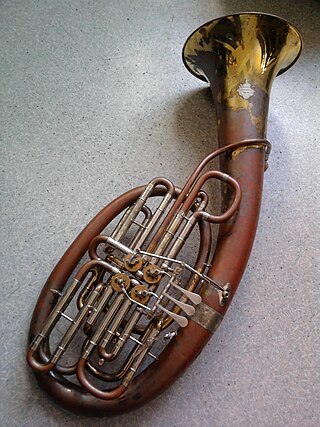
The Wagner tuba is a four-valve brass instrument commissioned by and named after Richard Wagner. It combines technical features of both standard tubas and French horns, though despite its name, the Wagner tuba is more similar to the latter, and usually played by horn players. Wagner commissioned the instrument for his four-part opera cycle Der Ring des Nibelungen, where its purpose was to bridge the acoustical and textural gap between the French horn and trombone.
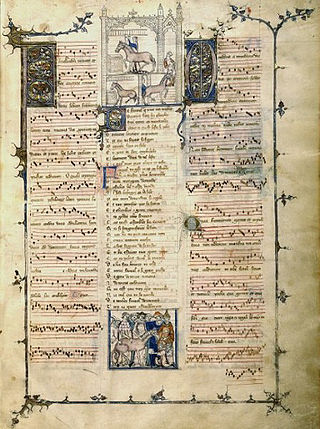
Ars nova refers to a musical style which flourished in the Kingdom of France and its surroundings during the Late Middle Ages. More particularly, it refers to the period between the preparation of the Roman de Fauvel (1310s) and the death of composer Guillaume de Machaut in 1377. The term is sometimes used more generally to refer to all European polyphonic music of the fourteenth century. For instance, the term "Italian ars nova" is sometimes used to denote the music of Francesco Landini and his compatriots, although Trecento music is the more common term for the contemporary 14th-century music in Italy. The "ars" in "ars nova" can be read as "technique", or "style". The term was first used in two musical treatises, titled Ars novae musicae by Johannes de Muris, and a collection of writings attributed to Philippe de Vitry often simply called "Ars nova" today. Musicologist Johannes Wolf first applied to the term as description of an entire era in 1904.

The Taverner Choir, Consort and Players is a British music ensemble which specialises in the performance of Early and Baroque music. The ensemble is made up of a Baroque orchestra, a vocal consort and a Choir. Performers place emphasis on a historically informed performance practice and players work with restored or replicated period instruments.
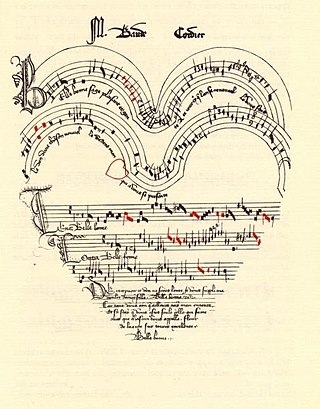
Baude Cordier was a French composer in the ars subtilior style of late medieval music. Virtually nothing is known of Cordier's life, aside from an inscription on one of his works which indicates he was born in Rheims and had a Master of Arts. Some scholars identify him with Baude Fresnel, a harpist and organist in the court of Philip the Bold, though other scholars have rejected this.

Concerto in E-flat, inscribed Dumbarton Oaks, 8.v.38 (1937–38) is a chamber concerto by Igor Stravinsky, named for the Dumbarton Oaks estate of Robert Woods Bliss and Mildred Barnes Bliss in Washington, D.C., who commissioned it for their thirtieth wedding anniversary. Composed in Stravinsky's neoclassical period, the piece is one of Stravinsky's two chamber concertos and is scored for a chamber orchestra of flute, B♭ clarinet, bassoon, two horns, three violins, three violas, two cellos, and two double basses. The three movements, Tempo giusto, Allegretto, and Con moto, performed without a break, total roughly twelve minutes. The concerto was heavily inspired by Bach's set of Brandenburg Concertos, and was the last work Stravinsky completed in Europe, started in spring 1937 at the Château de Montoux near Annemasse, near Geneva, Switzerland, and finished in Paris on March 29, 1938.

The concerto delle donne was an ensemble of professional female singers of late Renaissance music in Italy. The term usually refers to the first and most influential group in Ferrara, which existed between 1580 and 1597. Renowned for their technical and artistic virtuosity, the Ferrarese group's core members were the sopranos Laura Peverara, Livia d'Arco and Anna Guarini.
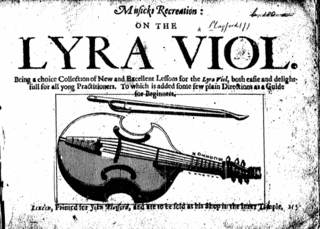
The lyra viol is a small bass viol, used primarily in England in the seventeenth century.
Viola bastarda refers to a highly virtuosic style of composition or extemporaneous performance, as well as to the altered viols created to maximize players' ability to play in this style. In the viola bastarda style, a polyphonic composition is reduced to a single line, while maintaining the same range as the original, and adding divisions, improvisations, and new counterpoint. The style flourished in Italy in the late 16th and early 17th centuries. Francesco Rognoni, a prominent composer of divisions, stated that although works using the bastarda techniques could be played by a number of instruments, including organ, lute, and harp, the "queen" of bastarda technique was the viol because of its agility and large range.
"Flow, my tears" is a lute song by the accomplished lutenist and composer John Dowland (1563–1626). Originally composed as an instrumental under the name "Lachrimae pavane" in 1596, it is Dowland's most famous ayre, and became his signature song, literally as well as metaphorically: he would occasionally sign his name "Jo: dolandi de Lachrimae".

The piccolo trumpet is the smallest member of the trumpet family, pitched one octave higher than the standard B♭ trumpet. Most piccolo trumpets are built to play in either B♭ or A, using a separate leadpipe for each key. The tubing in the B♭ piccolo trumpet is one-half the length of that in a standard B♭ trumpet. Piccolo trumpets in G, F, and even high C are also manufactured, but are rarer.

In music, division refers to a type of ornamentation or variation common in 16th- and 17th-century music in which each note of a melodic line is "divided" into several shorter, faster-moving notes, often by a rhythmic repetition of a simple musical device such as the trill, turn or cambiata on each note in turn, or by the introduction of nonchord tones or arpeggio figures. The English term 'division' broadly corresponds to the contemporary usage of passaggio in Italian, diferencia or glosa in Spanish, and double in French.
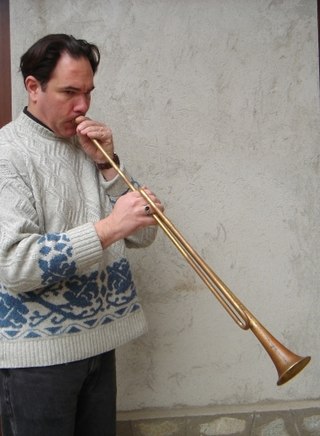
The slide trumpet is an early type of trumpet fitted with a movable section of telescopic tubing, similar to the slide of a trombone. Eventually, the slide trumpet evolved into the sackbut, which evolved into the modern-day trombone. The key difference between these two instruments is that the slide trumpet possesses only a single slide joint, rather than the two joints in the U-shaped slide of the sackbut or trombone. There are several types of slide trumpet of different places and eras.

Clamor Heinrich Abel was a German composer, violone player and organist.
A rhoptron was a buzzing drum used in Parthian music. According to Plutarch, the Parthian Empire used it made a frightening sound—resembling a mix of animal noises and lightning—to scare their opponents in battle, instead of the more typical Greek battlefield instruments like the salpinx.












